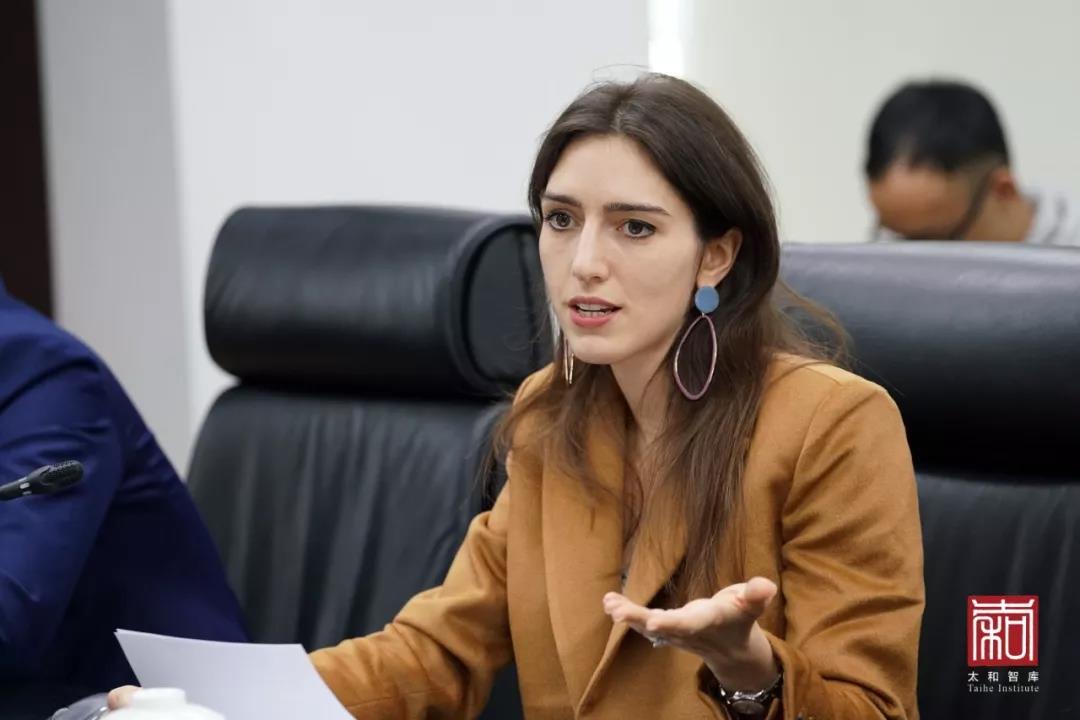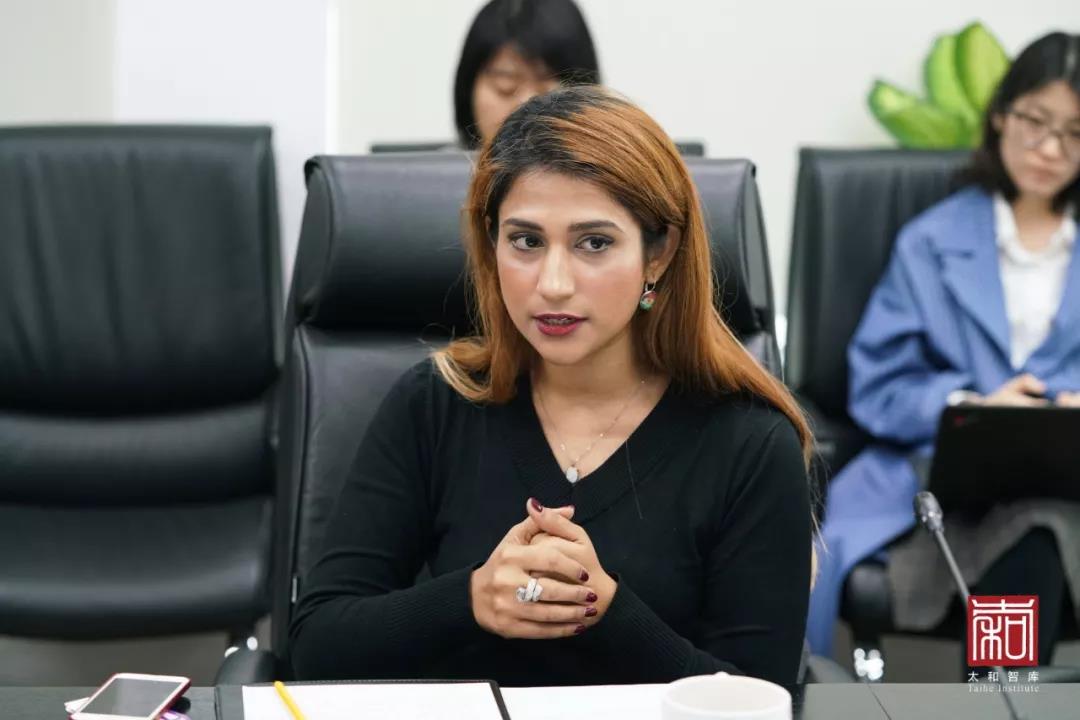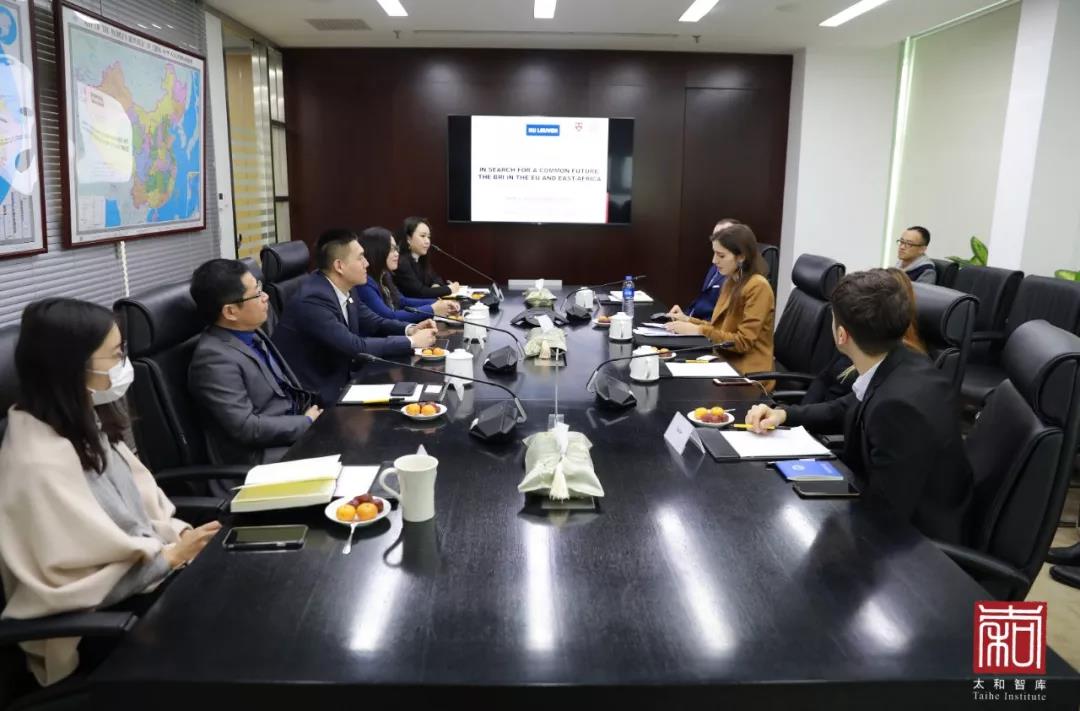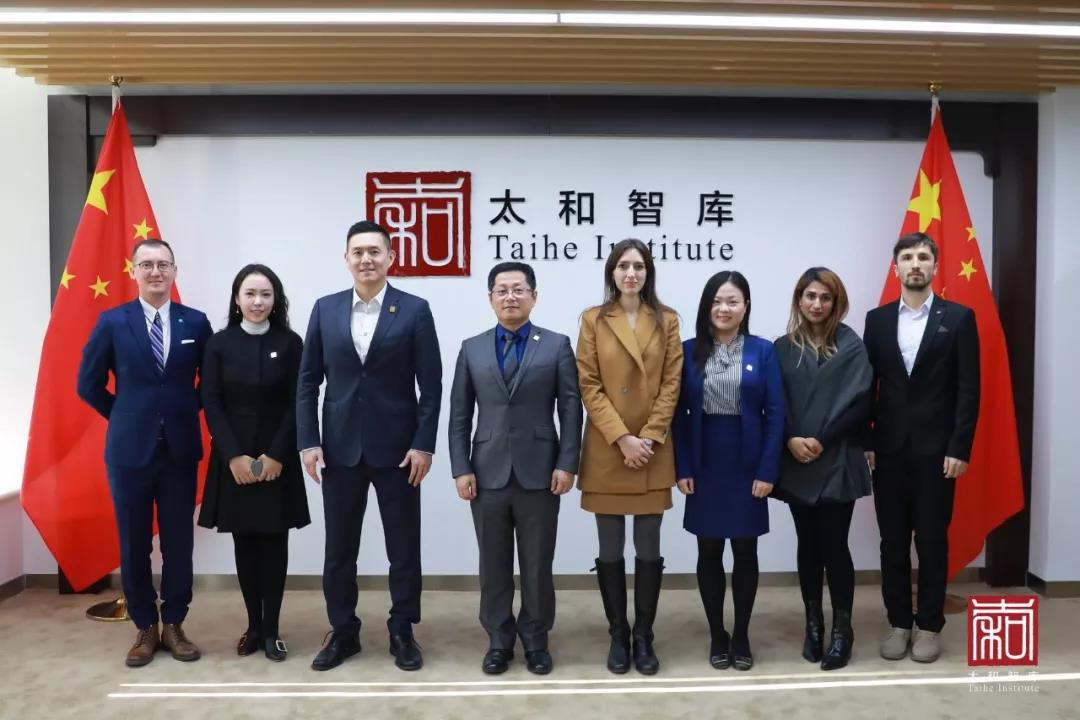On December 10, sinologist and political scientist Dr. Maria Adele Carrai delivered a speech at the Taihe Institute entitled "In Search of a Common Future: The BRI in the EU and East-Africa" and held a discussion with research fellows of the Taihe Institute. Dr. Carrai holds the Marie Curie Fellowship at Leuven Centre for Global Governance, is a Fellow of the Harvard University Asia Center, and an Associate Research Fellow of the Weatherhead East Asian Institute at Columbia University.

According to Dr. Carrai, the deepening of the Belt and Road Initiative presented both opportunities and challenges for China-EU cooperation. Broad prospects existed for collaboration in economics, trade, energy, security, climate change and innovation, and in particular there were substantial common interests and opportunities for cooperation in terms of safeguarding the three pillars of the United Nations (Peace, development and human rights), climate change and the Iranian nuclear issue. As the first member of the G7 to sign a memorandum of understanding with China on the Belt and Road Initiative, it was in Italy’s national interest to strengthen cooperation with China, and this would inject new vitality into the economic and trade relations between the two countries.
China-EU relations were now at a critical crossroad. Dr. Carrai noted that the shift in attitudes between China and the EU had been embodied in a series of recent events: the release of the EU-China Strategic Outlook this year, which for the first time identified China as “an economic competitor in pursuit of technological leadership”, and “a systemic rival that promotes alternative forms of global governance". The EU was moving to impose foreign direct investment screening mechanisms in the name of protecting energy, telecommunications and finance; Huawei 5G technology in Europe faced resistance, while, despite promoting Eurasian connectivity, the EU had not realized a unified and strong strategy regarding China. At the same time, the Trump administration's anti-globalization policy had prompted Europe and China to reach a consensus on respecting globalization and multilateral mechanisms.
On the development of the BRI in East Africa, Dr. Carrai said that this framework created the conditions for China and Africa to achieve extensive cooperation in almost all fields, including industrialization, modern agriculture, infrastructural development, finance, trade, green development, poverty reduction, public health, people-to-people exchanges, and security. The combination of China's capital, technology, market, and talents with Africa's rich resources and huge demographic dividend was very likely to lead to the next development miracle. But she added that, at the same time, these opportunities go hand in hand with many uncertainties, such as the impact on Chinese investment of the unfamiliarity with the local business environment, the lack of control by the Chinese government over its companies operating abroad, lack of local support, and the potential adverse impact of regional political unrest.

During the discussion session, Ms. Zoon Ahmed Khan, Research Fellow at the Belt and Road Strategy Institute in Tsinghua University, said that the EU still misunderstood the Belt and Road Initiative, believing that China was its sole interpreter. However, the reality is that, rather than imposing a development model, China conducted consultations on an equal footing with partner countries, based on their domestic priorities, to determine the scale and scope of Belt and Road projects.
In terms of the debt diplomacy argument, Khan pointed out that because recipient countries competed with each other for investment, this could create problems of overestimating their capability to pay off the debt. China’s reasonable allocation of loan quotas was widely seen among host countries as the highlight of Belt and Road cooperation. Providing ample flexibility while ensuring project oversight and progress was another strength of the Belt and Road investment that Khan thought highly of. Taking Pakistan as an example, she stated that, unlike some international banks or donors that saw security as a major issue, China understood that the money invested in improving infrastructure, technology, and education contributed in turn to security and stability and promoted economic and social progress. This, Khan said, was strong evidence that rather than seeking to challenge the world order, China was trying to find innovative solutions to existing International challenges.
Amid the world’s uncertainties and volatility, increasing the effectiveness of the the Belt and Road Initiative requires paying attention to diverse voices, among which that of the younger generation is of particular significance. In the future, the Taihe Institute will continue its commitment to building exchange platforms for Taihe’s young research fellows and scholars, encouraging them to play a more prominent role in seeking common solutions to global challenges.
—————————————————————
ON TIMES WE FOCUS.
Should you have any questions, please contact us at public@taiheglobal.org



